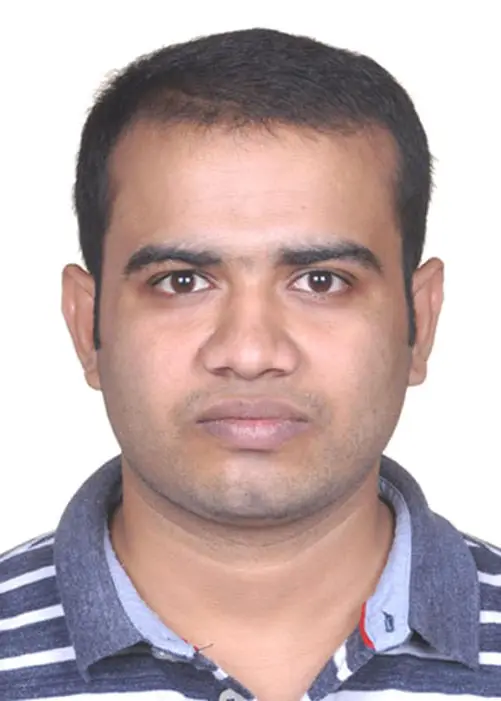A multi-year collaboration between electrical and materials science engineers at the University of Wisconsin-Madison has resulted in a promising new electron emission cathode material, a key component in modern vacuum electronics. The new material could improve components used in satellite communications, electron microscopy and other high-power, high-frequency applications.
 John Booske
John Booske
In a paper posted June 5, 2024 by the journal APL Materials, the team demonstrates that the material, strontium vanadium oxide, exhibits a low work function, making it an ideal material for electron emission cathodes. The researchers include John Booske, a professor emeritus of electrical and computer engineering; Dane Morgan, a professor of materials science and engineering; Ryan Jacobs, a staff scientist; and Md Sariful Sheikh, a postdoctoral researcher.
For much of the 20th century, vacuum electronics, including the well-known vacuum tubes, were a critical—and highly visible—technology. In particular, glass vacuum tubes were key components in radios, televisions, low power amplifiers and early computers before smaller, mass-manufactured semiconductor-based transistors replaced them. But modern versions of vacuum tubes are still with us (one is hidden in your microwave oven), and are critical to high-power, high-frequency and/or high-voltage applications that challenge traditional semiconductor devices. These applications include radar, high power satellite communications, industrial (and domestic) microwave heating, electron microscopes, and scientific research applications.
 Dane Morgan
Dane Morgan
In a vacuum electronics device, energy is applied to a cathode material, causing electrons to stream off the cathode and toward an anode. Because this stream of electrons is moving through a vacuum, it can handle energy levels that would melt or damage a solid semiconductor, like silicon. To make these devices smaller and more efficient, researchers are always looking for new cathode materials with a lower work function.
“If you find a material that has a lower work function, it takes less effort or force to get the electrons into the vacuum” says Booske. “You therefore can find advantages in that for improving electrical devices, like operating at lower temperatures and increasing the device lifespan.”
Booske and Morgan have been collaborating on the hunt for these novel electron emission cathode materials for almost 20 years, but the investigation of this new material began about eight years ago.
“The work was based on the hypothesis that a class of materials called perovskite oxides might be good electron emitters because they’re electrically conductive, stable under reducing environments (like ultra-high vacuum), and, crucially, may exhibit low work function by virtue of intrinsically polar layers in the native crystal structure,” explains Jacobs. “If you orient perovskite surfaces correctly, you can have a strong dipole layer at the surface that may lead to low work function.”
 Ryan Jacobs
Ryan Jacobs
Jacobs, picking up the work of previous graduate students in Morgan’s lab, set about to study about 20 materials in this class, subjecting them to sophisticated modeling and computational analysis before focusing on strontium vanadium oxide. Several students following Jacobs expanded the computational search, developed methods to synthesize powders, conducted preliminary experimental tests, and identified the experimental technique required to definitively characterize the material’s low work function properties. First Lin Lin, who worked as a graduate student in the group, then Sheikh led the process of realizing that experimental technique and confirming that it did indeed exhibit the low work function predicted by computational analysis.
“The hardest part was processing the material to be able to get the properties we wanted in the end,” says Jacobs. “But the fundamental process—the underlying hypothesis, the computational screening, and making these materials—seemed to work.”
 Md Sariful Sheikh
Md Sariful Sheikh
Strontium vanadium oxide and some other perovskite materials identified during the process are strong candidates for commercialization. But Morgan thinks that an equally important part of the work was the discovery process and collaboration that gave rise to it.
“These exciting results had their start in John reaching out to me in 2005, when he realized the opportunities for my modeling skills to help in his areas of expertise,” Morgan says. “That generous effort to engage across departments and disciplines started a 20-year collaboration on modeling and experiments on electron emission that continues to this day. The work has led to many papers, trained many talented students, and culminated in new understanding, new mechanisms, and a new class of materials. For me, this is a model of how collaborative science should be done and just one example of the kind of colleagues and collaborative spirit that make UW-Madison such a great place to work.”
John Booske is the Keith and Jane Morgan Nosbusch Professor Emeritus. Dane Morgan is the Harvey D. Spangler Professor of Engineering.
Other collaborators include Lin Lin of Princeton University; Martin Kordesch of Ohio University; Jerzy Sadowski of Brookhaven National Laboratory; and Margaret Lee Charpentier of Kimball Physics in Wilton, New Hampshire.
The authors acknowledge support from the Wisconsin Alumni Research Foundation; the Center for Functional Nanomaterials and the National Synchrotron Light Source II, which are U.S. Department of Energy (DOE) Office of Science facilities at Brookhaven National Laboratory under Contract No. DE-SC0012704; and the use of facilities and instrumentation supported by NSF through the University of Wisconsin Materials Research Science and Engineering Center (Grant No. DMR-1720415).
Top image: High power, high frequency vacuum electronics are key components in many technologies, including satellite communications.